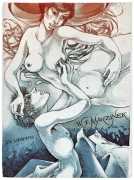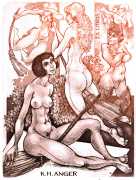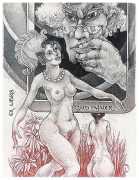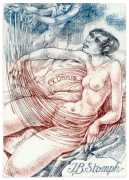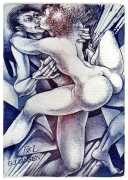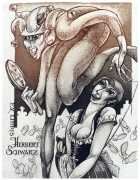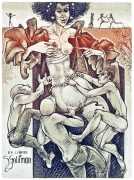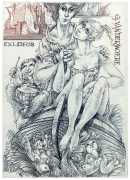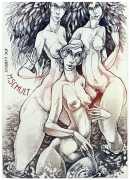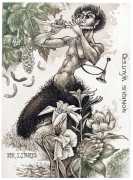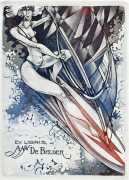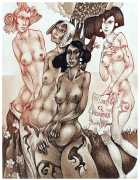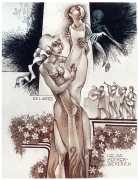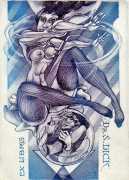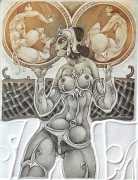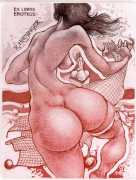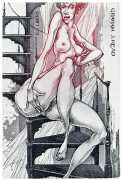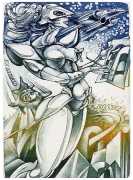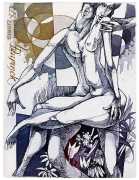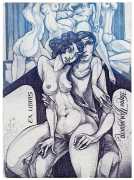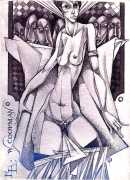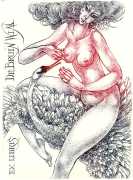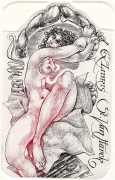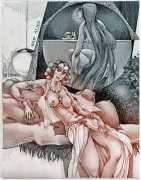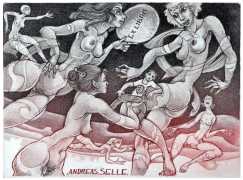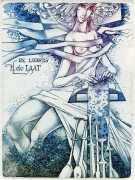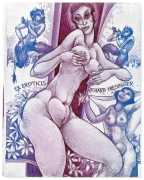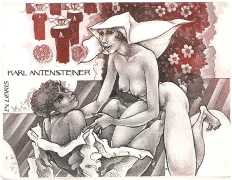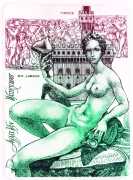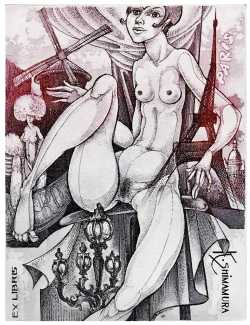 Bookplates, known to those who love, commission and appreciate the small-scale form, have always been one of Hedwig Pauwel’s favourite etching formats. Around half of his output can be classified as more or less erotic, and here we have an excellent overview of his work in this genre.
Bookplates, known to those who love, commission and appreciate the small-scale form, have always been one of Hedwig Pauwel’s favourite etching formats. Around half of his output can be classified as more or less erotic, and here we have an excellent overview of his work in this genre.
The first known bookplates or ex libris – a Latin phrase meaning ‘from the library of’ – are woodcuts from the fifteenth century, displaying the owner’s name and coat of arms. Through the centuries ex libris designers came up with ever more artful and imaginative designs for their clients’ libraries, inspiring a mania for collecting bookplates which lasted from the final quarter of the nineteenth century until the 1930s.
From the 1970s ex libris were once again in demand, eagerly sought by specialised collectors, and today there are websites, fairs and exhibitions dedicated to the artform. Many plates are now produced as signed and numbered small format fine art prints, known as ‘free’ ex libris, never intended to be glued inside books but instead to be framed and displayed in the library of the client fortunate enough to be able to afford to commission it.


